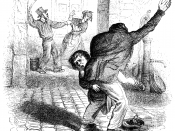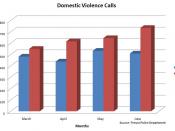"The cycle of violence must be broken before today's abused child becomes tomorrow's abuser." (The Attorney General's Task Force on Family Violence: 1984)
Every year an estimated 3.3 million children are exposed to violence against members of their family, or caretaker by other family members. In homes where this violence occurs, fear, instability, and confusion replace the love, comfort, and care that a child needs. These children live in constant fear of harm from the people that are supposed to care and protect them. The effects of these children from witnessing and being subjected to abuse is alarming. Battering and domestic violence does not only effect the child in the current situation, but it also yields long term emotional damage to the child. (The Effects of Domestic Violence On Children by Joseph Volpe Ph.D. http://www.aaets.org/arts/art8.htm)
When living in a household polluted with abuse, children will react to it on many different levels.
On one level, research has indicated that violent behavior is learned from the parent. The child tends to model the behavior of and/or identify with the parent's method of resolving conflict. After observing abusive behavior, the child learns that hitting, slapping, etc. are effective and acceptable ways to resolve problems in the home. As a result, chance are high that the child will grow up and adopt that learned behavior on their spouse or family member.
Withdrawn behavior can also been seen in children. The child witnessing violence in the home may identify with the victims displays of passive, withdrawn behavior. They begin to understand that home is not a place for security and healthy relationships, instead it becomes a place of unpredictable danger. When displaying this behavior, the child may have extreme difficulty asserting his or her needs and copes with violence by withdrawal and...


